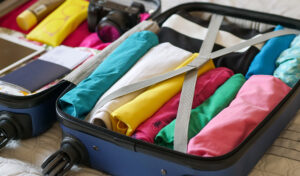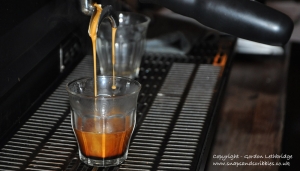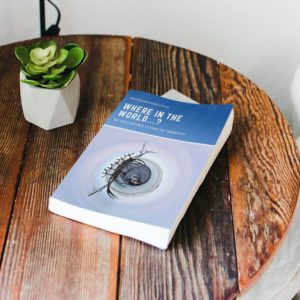“The most beautiful stream of my kingdom” is what Francois I said of the River Charente and having spent a week on the river between Angoulême and Cognac I am not about to disagree with him.
The river, which gives its name to two departments and a region, is 361km long and is navigable from Angoulême to Rochefort a distance of 147 km. Ease of navigation on the river was a reason for the region’s prosperity but it was not always that way. There were numerous weirs and these each had to be negotiated by the bargemen. The noblemen along the river also charged taxes, which made them rich but very unpopular. Despite this boats were loaded at Angoulême with cloth for sails; paper from its mills destined for Paris, Holland and England; bombs bullets and canons for the shipyards at Rochefort and La Rochelle; and brandy wine for Holland, England and America.
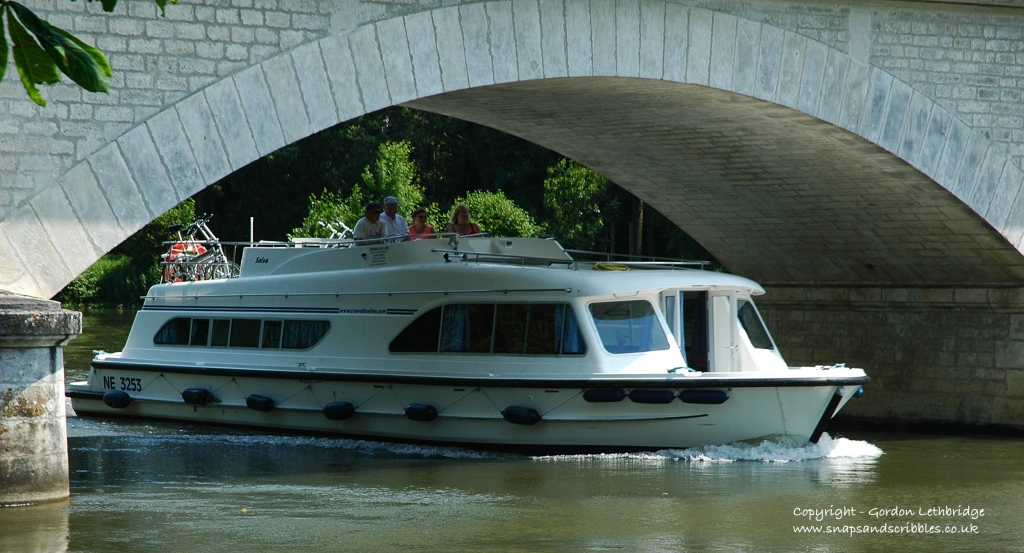
At the end of the 18th century two engineers were given the task of improving navigation on the river in an effort to make transport of goods more efficient. The Charente was dredged to create navigable channels, weirs were raised, locks were built and ports built. A boat building industry grew to construct garbares, flat bottomed boats with raised bows to make passage in the shallow waters easier. Railways came and river traffic declined until the advent of river cruising brought new life to the river.
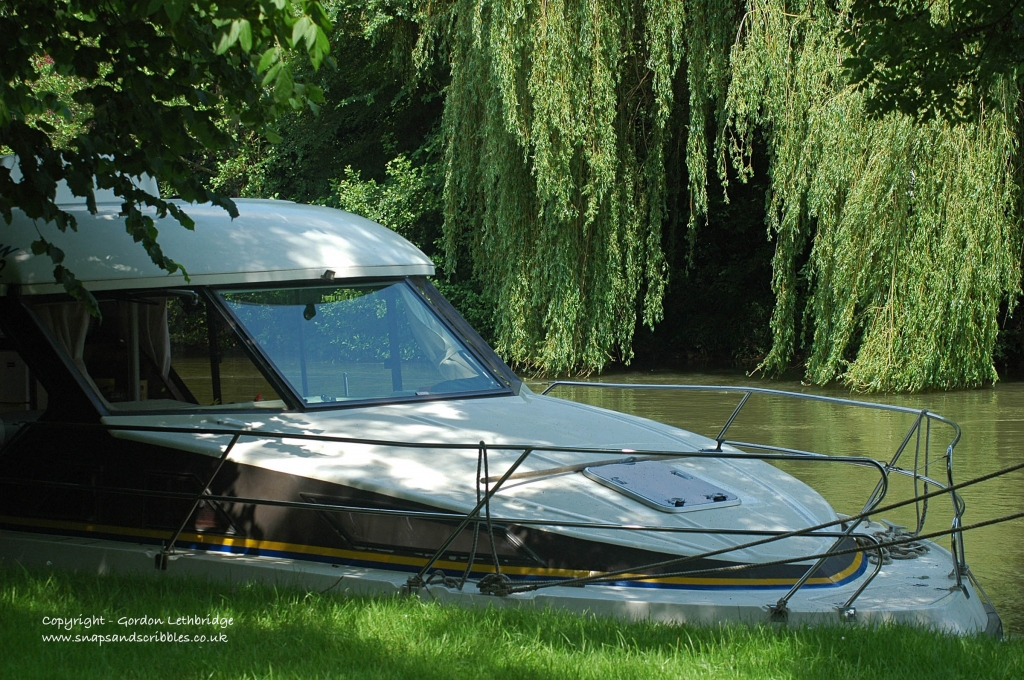
“There is nothing – absolutely nothing – half so much worth doing as simply messing about in boats,” says Ratty in Wind in the Willows. For anyone wanting to “mess about in boats” it is very easy to hire a leisure cruiser. No license is needed and the controls are simplicity itself; a steering wheel and a lever for forward and reverse.
Angoulême, where I began my cruise down the river, is built on a rocky bluff around which the River Charente meanders. Port l’Houmeau below the Old Town is a pleasant place to moor the boat and wander up the hill to explore.
Angoulême has been known for its quality paper production since the 16th century and many of the old mills still stand beside the river. Although the old methods have been replaced by modern industrial processes top quality paper is still produced in the town. A visit to the paper museum close to the river gives a more detailed insight into paper-making and the part the river plays.
Close to the paper museum is the Centre National de la Bande Dessinée (The National Comic Strip Museum) in its new home on the river. It gives an overview of the comic strip, mostly the French and Belgian variety, from its inception through the ever popular Tintin and Asterixs up to the extremely popular Manga comics imported from Japan.
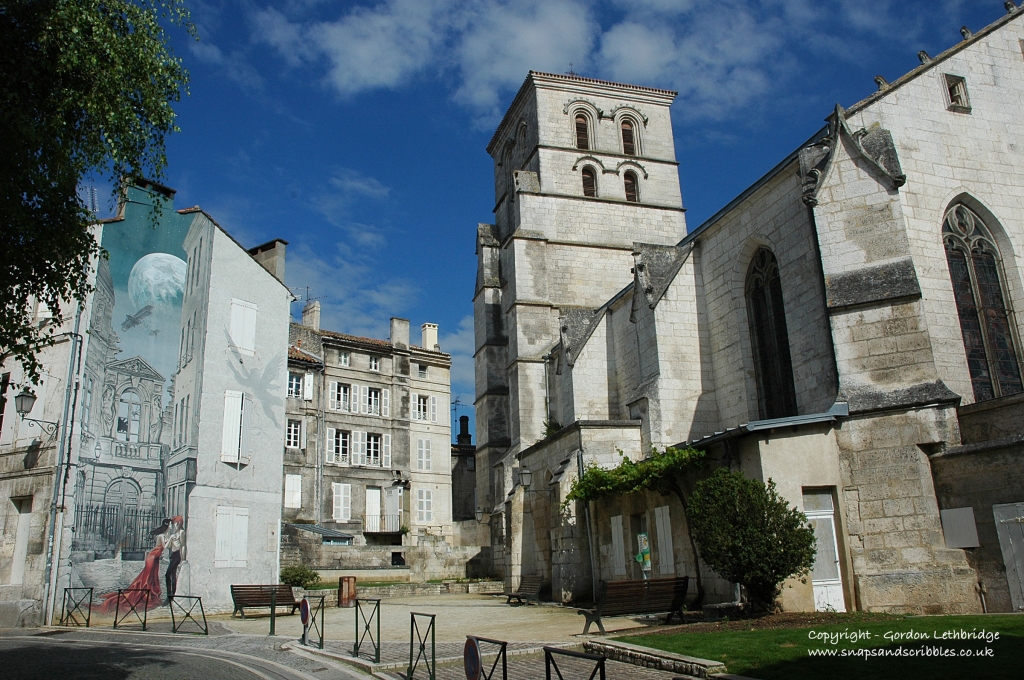
For those feeling like a stroll round town there is a trail of over 20 murals by well-known painters and comic strip artists. The old town’s narrow winding streets can also be explored on foot taking in the ramparts and the intricately carved façade of the Cathédrale St-Pierre.
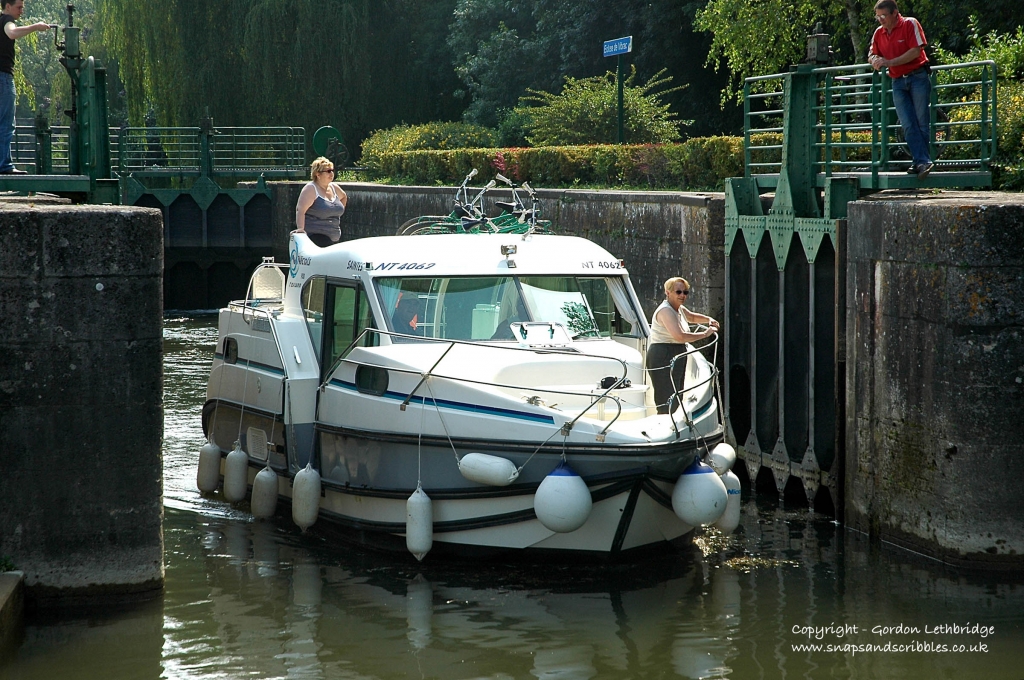
There are 18 locks between Angoulême and Cognac and none of them have lock keepers so it is up to the crew of the boat to operate them. It is relatively simple to negotiate a lock even a child can do it and during the summer months that is exactly what happens. You will often find local children operating the locks for you.
Moulin Fleurac is one of the most beautiful spots along the river. The Charente flows round a number of islands landscaped with trees and shrubs that are each connected by footbridges over the weirs and sluices. There is also a picturesque lock and an old paper mill. It is a very popular place for a picnic and there are often boats moored either to a tree on one of the islands.
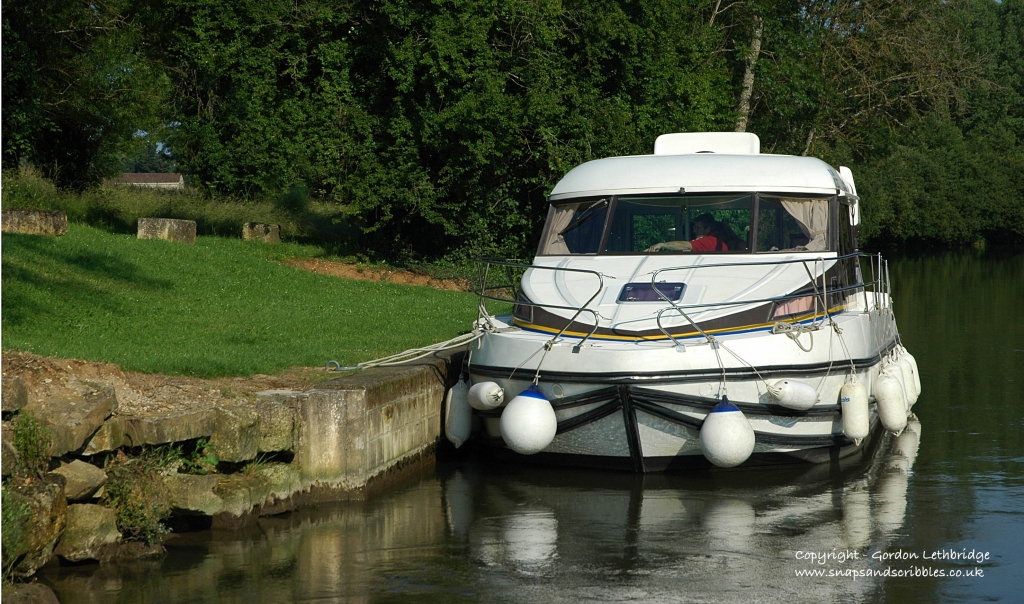
The next lock down from Fleurac is a must stop for all chocoholics. As you approach you will see the spire of the 11th century church at Trois Palis about 400km back from the right riverbank. If the wind is in the right direction you can actually smell the chocolate. Moor at the pontoon on the right of the river just prior to the lock and walk up to the village to the unpretentious entrance of the Letuffe chocolate factory. They are open weekdays and are willing to take you on a tour. All the chocolates and sweets are made by hand and you will often see the owner Monsieur Letuffe himself preparing Cognac or Pineau liqueurs, nougat or truffles.
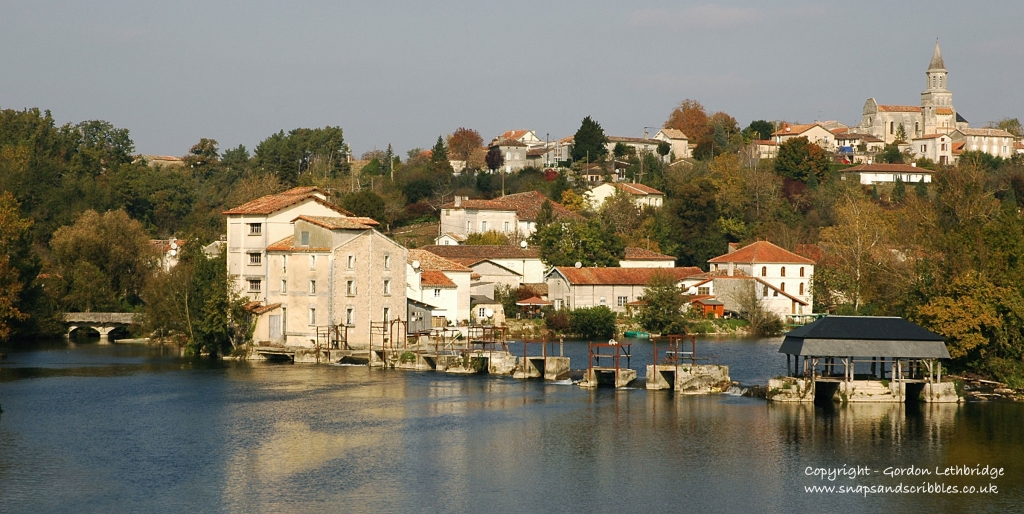
Saint Simeux with its Romanesque church prominently sited on a hill above the Charente was an important stop and most of its economy revolved around river traffic, mills and the fishing industry. Roofed fishing traps are perched on top of the many weirs here and close to the bank several mills jut out into the river.
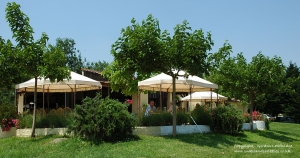
It is one of the more picturesque stops along the river and is a popular stop for a picnic or lunch at the Pub Gabariers. After lunch it is worth strolling up onto the bridge as the best views of St Simeux are from here.
Châteauneuf de Charente is hardly noticeable from the river but two of the largest Cognac houses, Martell and Courvoisier, have their distilleries here.
From here to Saint Simon the river passes few settlements and is a great stretch for seeing some of the wildlife of the river. Ducks and swans are the most common birds along with the grey heron, which can often be seen standing in the shallows or on top of the weirs looking for fish and eels. Early in the morning the Martin pecheur or kingfisher can be observed perching on branches or darting down to catch his breakfast. Raptors, particularly kites and buzzards are often seen along the banks searching for unwary voles, rats and mice as well as frogs. An unusual river resident I spotted more than once on semi-submerged trees were turtles. Apparently these were popular as pets when they were small but outgrew their vivariums so were dumped in the river where they survived and soon started breeding.
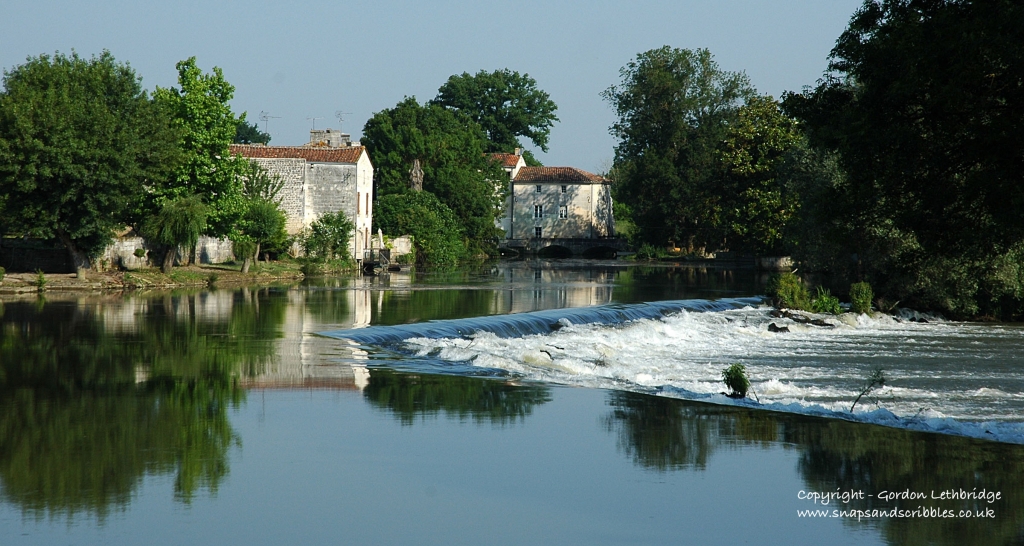
St Simon was the boat-building centre of the Charente. The quayside is the longest on the river with the exception of Angoulême and Cognac. From the quay a 2km boat-building trail takes you around the village and the surrounding countryside with information panels in both French and English at each point of interest. Unlike most villages the houses are well back from the river’s edge and have long gardens extending to the water’s edge. Originally these long gardens were the shipyards.
This stretch of the Charente flows through cognac country. From the small mooring at Graves you can take the short walk along the river to the village of Les Aireaux to visit Brillet, one of the finest small distilleries along the river. A family business they have been cognac distillers since the 17th century.
It is worth stopping in Bassac overnight as there is the fine Abbaye de Bassac to visit and a superb restaurant, L’Essille that is very popular with locals.
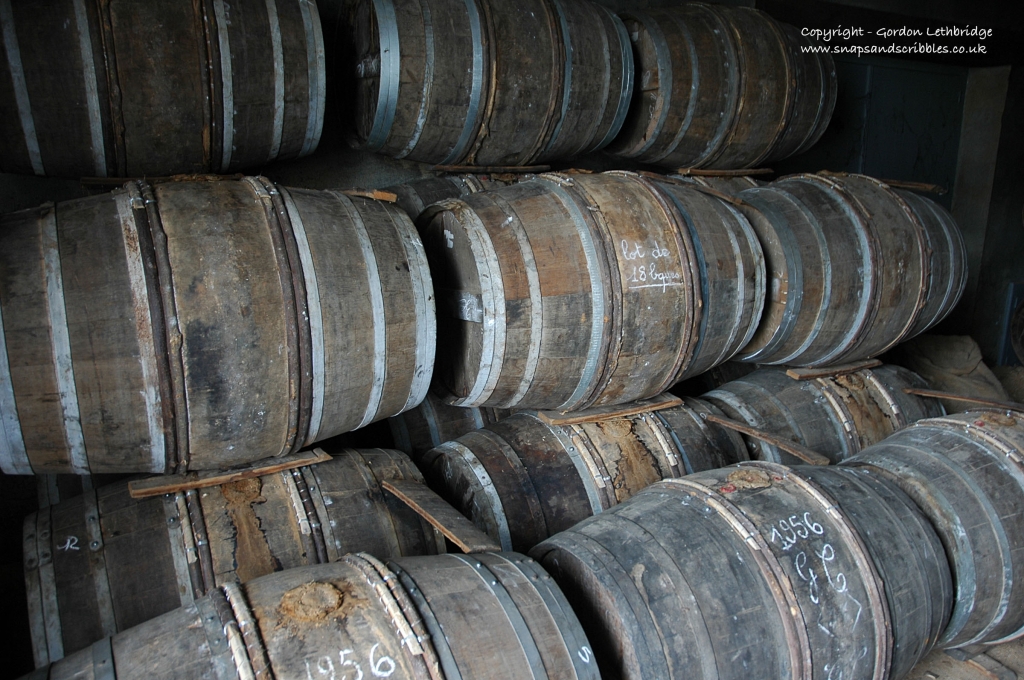
Jarnac’s claim to fame apart from being home to the cognac house of Courvoisier is the fact that France’s president Mitterand was born here. There is a museum where the gifts from visiting heads of state to France during Mitterrand’s premiership are all displayed. Beside the river are the attractively laid out Jardin Publique and the Courvoisier cellars. Downstream from the lock the quays are lined with imposing dwellings; an indication of Jarnac’s prosperity which was built on trade in salt and cognac.
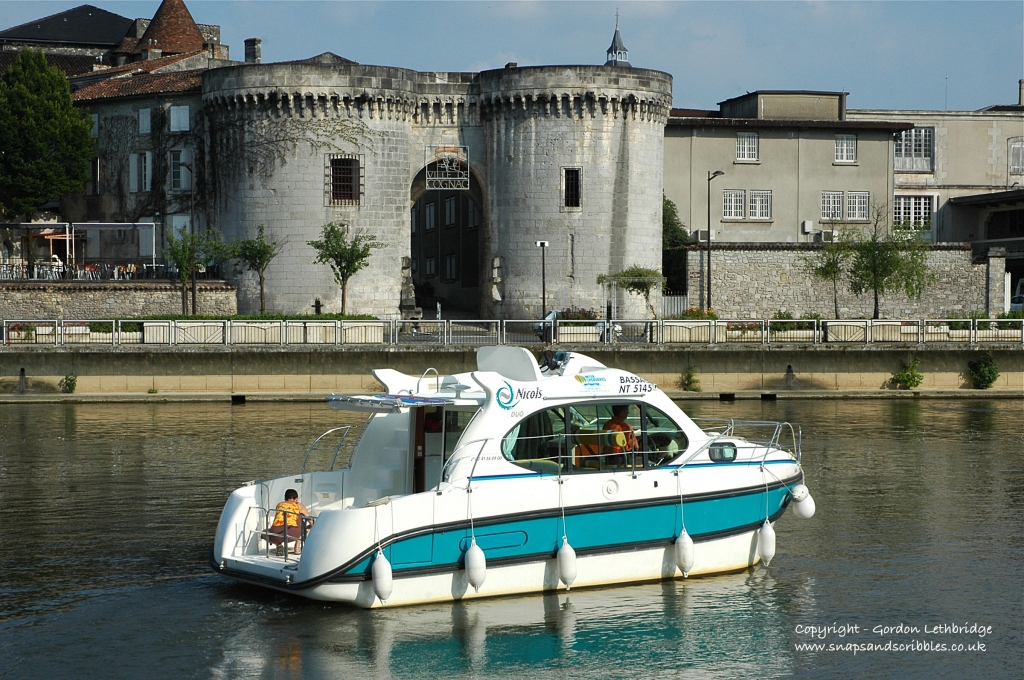
Pont St-Jacques marks the beginning of riverside Cognac where all the trade in first salt and then the spirit cognac was conducted. On the left bank are the two imposing towers of the old city defences and the castle, which now serve as the cellars of the Cognac house of Otard, and the warehouses and cellars of Hennessey, Martell. All the main cognac houses have guided tours.
The pace of life on the river is at the slow pace of 10kph (6mph) and with each lock taking 20 minutes or more to negotiate there is plenty of time to enjoy a journey of several days that would normally take less than an hour by car.
Guy Morisset, a man with the Charente flowing through his veins says of those on the river, “The less they know the region the more they are tempted to stop to explore…” I am not about to disagree with him either.
Le Boat, a UK based company, hire self-drive boats on the Charente starting from £885 for a boat sleeping 4 people
